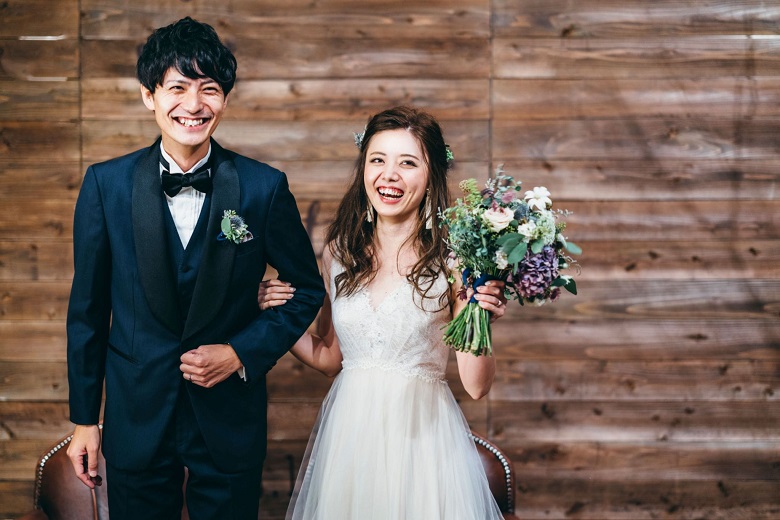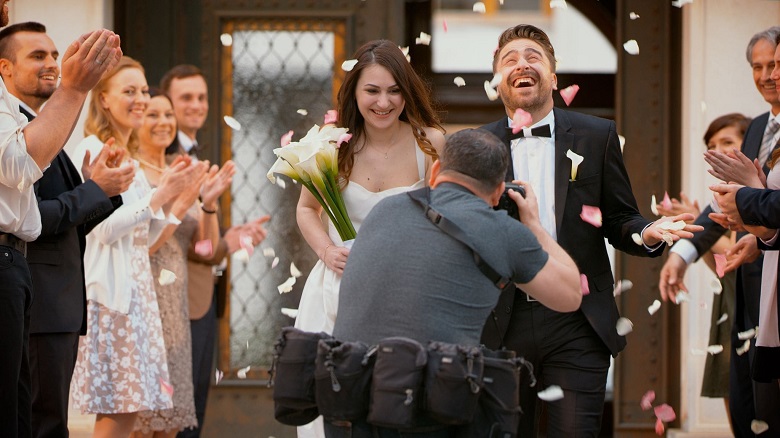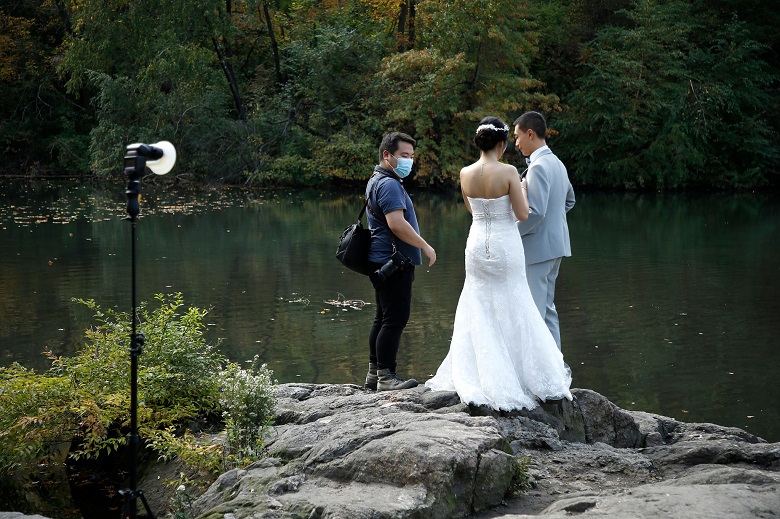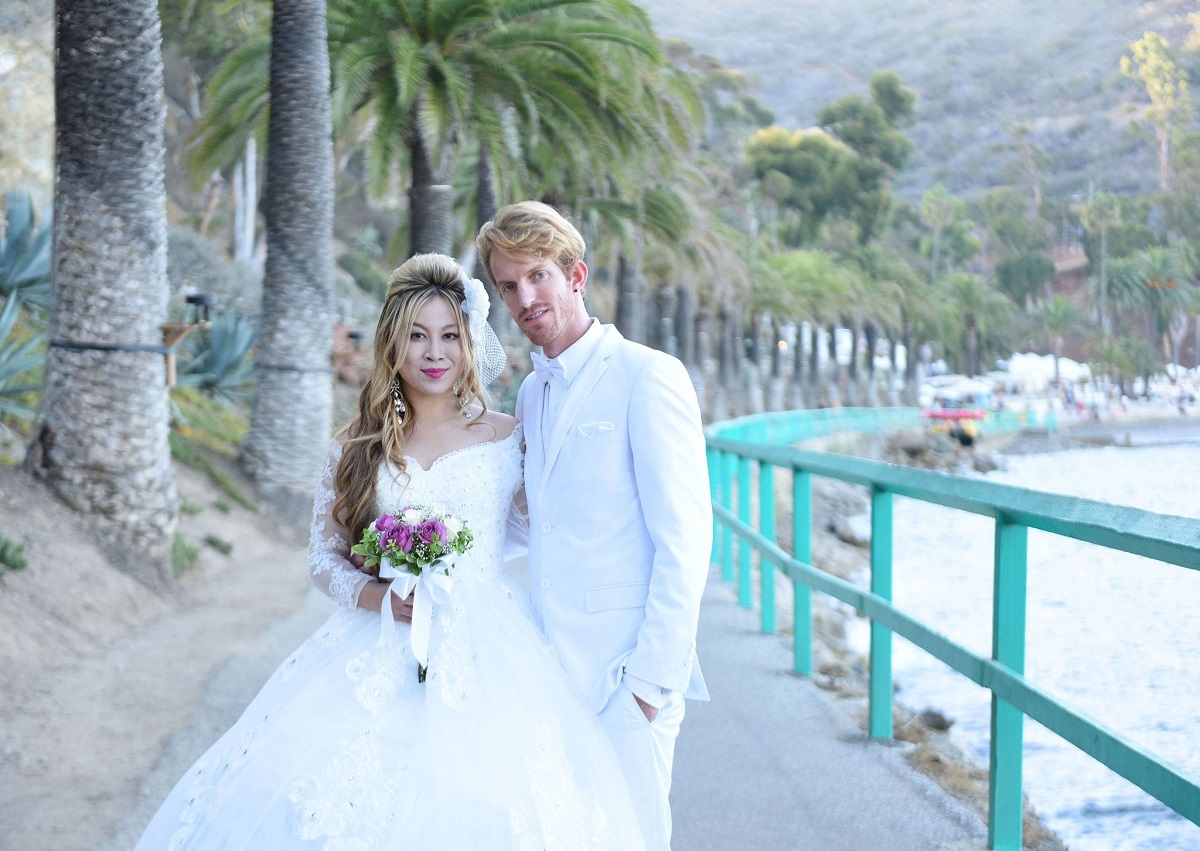Planning a pre-wedding photoshoot can seem like an overwhelming task if you are someone who has never photographed anyone before, but with this tutorial, you will learn all the necessary steps to take to complete your very own pre-wedding photoshoot and wow your clients.
A few days before the wedding day, couples will do something called a pre-wedding photoshoot to capture the most beautiful moments of their relationship, since it won't be possible during the wedding day itself. Many couples prefer to schedule their pre-wedding photoshoot one or two months before the wedding date, while others choose to do it just a few days or even hours before the wedding ceremony starts. These photos are used in various ways such as save-the-date cards, thank you cards and so on.Equipments Every Beginner Photographer Needs for a Pre-Wedding Photoshoot
[caption id="attachment_35998" align="alignnone" width="780"]

Equipments Every Beginner Photographer Needs for a Pre-Wedding Photoshoot[/caption]
If you don’t have the right equipment for pre-wedding photography, you’ll likely miss out on some amazing opportunities. Here are some important pieces of equipment every beginner photographer needs for a pre-wedding photoshoot.Camera
When choosing a camera, it's important to take into account whether you plan on shooting in low light or if you simply want an easy way to share your photos online. If you're looking for something that will allow you to edit your photos after taking them, consider purchasing a DSLR (digital single-lens reflex) camera with interchangeable lenses. Another option is a mirrorless camera, which is generally lighter and more compact than DSLRs. Keep in mind that most cameras come with built-in image stabilization technology, which can help reduce blurriness caused by shaking hands.Lens
The lens is one of the most important components of your camera and will greatly affect how your images turn out. Zoom lenses are generally better suited to wider shots, while fixed lenses provide more versatility in photography, as they can be used to capture both wide shots and close-ups without switching lenses. Most cameras come with a standard zoom lens that covers everything from wide angles to telephoto views. If you want even more flexibility, consider purchasing additional lenses separately.
It is important equipment for a pre-wedding photoshoot. Rather than using their camera’s pop-up flash, most photographers use speedlights to shoot wedding pre-wedding sessions. For one thing, they are far more powerful and adjustable than those built into your DSLR. Another reason: they give you control over what is known as the triangle of light.
No other piece of equipment provides better support than a tripod, which is important if you want to minimize camera shake and produce clean shots with nice exposures. A good tripod can hold your camera in place no matter what kind of shot you’re taking: landscape, portrait, macro or action. Tripods are also great for shooting in low light, as they allow you to take long exposures that reduce blur and prevent unwanted noise from showing up in your images.ND Filter and Polarizer Filter
ND filter and Polarize filter are necessary for a fabulous pre-wedding photoshoot. Both of these filters are used to reduce reflections and glare. They also help you add more depth to your pictures. ND filters, or neutral density filters, reduce light intensity by 2 stops while polarizing filters cut out glare by 1/3 stop. These two items are especially useful in bright sunlight situations like on a beach or around water bodies. In general, it is recommended that you have both of these attachments if you want to take landscape photography seriously.Power Bank and Extra Battery Section
A photographer can never have too many batteries or too much power. Even if you use your DSLR on a single battery charge for an entire wedding day, it's still best to keep an extra battery with you at all times. That way, when you least expect it (and just as your camera is about to go dead), you'll still be able to capture that important moment. After all, there's no such thing as having enough photos of your clients—especially at weddings.
[caption id="attachment_36074" align="alignnone" width="780"]

Tips for the perfect pre-wedding photoshoot for beginner photographer[/caption]
Following are some important tips for perfect pre-wedding photography:Pick The Best Time Of Day
A great time to take photos of a couple is at sunrise or sunset. The light will be beautiful and soft, which will complement your couple’s faces and make for breathtaking photos. If you have any control over when you schedule your shoot, pick a time between an hour before sunrise and an hour after sunset. You can also choose to do outdoor shots during midday hours if you want some natural sunlight in your pictures as well.Know The Right Camera Settings
Before you even set foot outside your house, it’s important to know how to adjust your camera settings. This can be a little tricky if you’re using a DSLR, but there are plenty of tutorials online that can help with that. If you don’t have a DSLR, no worries! There are plenty of other options out there. Point and shoot cameras tend to have easier settings, so start there if you need some guidance. Once you know what ISO is (or how to change it), what aperture is (or how to change it), and shutter speed (or how to change it), then you’ll be ready for anything.Location, Location, Location
When you’re looking to do a pre-wedding shoot, your choice of location is important. Here are three key things to consider when planning your shot's comfort level, lighting and background. If you have any hesitations about shooting in a particular place—whether it be due to weather or aesthetics—you should go with another option. Also, if it isn’t possible to get enough natural light during your shoot (if it’s too dark or too bright), look into using professional photography lights instead of relying on an iPhone flash. Lastly, make sure you choose a location that fits well with your bride and groom-to-be’s personality; don’t just settle for something pretty.Props And Wardrobe
Before you go out and buy a whole wardrobe, take into consideration that you'll need to choose clothing that matches whatever locations you may be shooting in. Additionally, don't forget about your clothing—most amateur photographers fail to consider how their clothing impacts any shots they may get. Your attire is just as important as what your subjects are wearing. If possible, wear neutral colors that won't distract from anything else going on in an image. As far as props go, unless you have something specific in mind (like flowers or other decorations), it's best to leave them out of most images. Planning Ahead
Planning your pre-wedding photo shoot is an important step in creating a lasting memory of your engagement. The following steps will help ensure you do it right and end up with beautiful pictures that are priceless to you! You will also want to make sure that any details of your engagement and wedding are ironed out ahead of time as well. If you're planning on having multiple events at one location, such as a rehearsal dinner and reception there, make sure they're aware of what's going on beforehand so they can prepare accordingly. Also, keep in mind that some venues may have restrictions about how many hours or when you can use their facilities.Editing Tips
Editing is a wonderful way to boost your photography skill level and make your photos look amazing. However, it can be quite difficult to understand. While some believe that editing is simply about using filters and adding some color adjustments, true editing is so much more than that. Professional photographers spend hours upon hours studying their craft and learning everything they can about photography, to be better at their jobs. The following tips will help you learn how to edit like a pro!
Composition Is Key To Great Pics for Pre-wedding ceremony
[caption id="attachment_36083" align="alignnone" width="780"]

Composition Is Key To Great Pics for Pre-wedding ceremony[/caption]
Composition is everything. You want to make sure you are setting up each shot in a way that it can be framed properly and is designed well. When thinking about composition, keep these tips in mind- Don’t have too much going on in your picture; no one wants to look at a photo with 20 different elements cluttering it up. Try keeping your shots simple by only including one or two people, or maybe an object or animal if necessary. This will help draw attention to what you want people to see—your couple!
- Be creative when taking pictures. Don’t always take photos from eye level or straight on; try getting down low or shooting from above to get a unique perspective.
- Make sure there is some sort of balance in your photos. If you have two people standing next to each other, don't line them up perfectly center in the frame. Instead, give one person more space than the other so they aren't right on top of each other.
- Choose a background that complements your subject matter. If you are photographing someone wearing all black, don’t choose a white background because it won’t pop against their outfit as much as something darker would.
The most common mistakes which you should avoid as a beginner pre-wedding photographer
[caption id="attachment_36094" align="alignnone" width="780"]

The most common mistakes which you should avoid as a beginner pre-wedding photographer[/caption]
Following are three common mistakes that a beginner photographer should avoid during a pre-wedding photoshoot:Shooting with a wide-angle lens
One common mistake made by beginner photographers is shooting with a wide-angle lens. While it might seem obvious that a wide lens would create more distance between you and your subject, new photographers often forget about how distortion affects perspective. Wide-angle lenses also have a limited depth of field, which can make things in focus feel closer than they are.Forgetting about light
It's easy to forget about light when you're staring at your LCD screen and editing photos, but don't discount how much different lighting conditions can change what you see on your screen! The best way to get a better understanding of light is to take pictures outside during sunrise or sunset—when there's still plenty of natural light around, but less harsh shadows. You'll quickly learn how natural lighting changes depending on the time of day and weather conditions.Use of camera’s auto settings
Finally, another big mistake made by beginner photographers is using their camera's auto settings. This one sounds like an obvious one—but it happens so frequently because people rely too heavily on their cameras' automatic functions without understanding them fully first. Auto settings are fine if you're trying to snap quick photos or if you're just starting—but if you want high-quality images that truly capture your vision, then learning manual mode is essential.Conclusion
Pre-wedding photoshoots can be tricky, especially when you're just starting as a photographer. But hopefully, the guide above has given you the information you need to make sure your pre-wedding shoots are fun and productive, and that your clients have an amazing experience! At the end of the day, it's all about giving brides the perfect photos to share with their families to celebrate the love between two people and their friends and family. Remember that your subjects are trusting you to capture their big day and each moment they share with their partners on this special day – so make sure to use your skills in photography to give them beautiful memories to look back on.FAQs
What types of sessions are there?
There are two main types of sessions: engagement and wedding. Each type of session has slightly different dynamics to keep in mind when photographing, but they share a lot of similarities as well. Engagement photo shoots are typically shorter (no more than three hours) and don’t have as many people involved.How far in advance should I book my session?
You should book your session as soon as you know you’re ready to schedule one. While there are peak seasons in most markets, booking well in advance ensures that you get your first choice photographer and location. If possible, try to schedule at least four months before your wedding date. Many photographers get booked up years in advance.Where should I do my shoot?
The pre-wedding shoot can be done in numerous locations. Ideally, if you’re having a beach wedding, it’s best to do your shoot on an off day when there are not many tourists. However, if your wedding is taking place in a more urban setting like New York City or San Francisco, then you may want to take advantage of popular locations and create a variety of different photos that you can use at your wedding on your save-the-date cards or invitations.  Equipments Every Beginner Photographer Needs for a Pre-Wedding Photoshoot[/caption]If you don’t have the right equipment for pre-wedding photography, you’ll likely miss out on some amazing opportunities. Here are some important pieces of equipment every beginner photographer needs for a pre-wedding photoshoot.
Equipments Every Beginner Photographer Needs for a Pre-Wedding Photoshoot[/caption]If you don’t have the right equipment for pre-wedding photography, you’ll likely miss out on some amazing opportunities. Here are some important pieces of equipment every beginner photographer needs for a pre-wedding photoshoot. Tips for the perfect pre-wedding photoshoot for beginner photographer[/caption]Following are some important tips for perfect pre-wedding photography:
Tips for the perfect pre-wedding photoshoot for beginner photographer[/caption]Following are some important tips for perfect pre-wedding photography: Composition Is Key To Great Pics for Pre-wedding ceremony[/caption]Composition is everything. You want to make sure you are setting up each shot in a way that it can be framed properly and is designed well. When thinking about composition, keep these tips in mind
Composition Is Key To Great Pics for Pre-wedding ceremony[/caption]Composition is everything. You want to make sure you are setting up each shot in a way that it can be framed properly and is designed well. When thinking about composition, keep these tips in mind The most common mistakes which you should avoid as a beginner pre-wedding photographer[/caption]Following are three common mistakes that a beginner photographer should avoid during a pre-wedding photoshoot:
The most common mistakes which you should avoid as a beginner pre-wedding photographer[/caption]Following are three common mistakes that a beginner photographer should avoid during a pre-wedding photoshoot:
 admin
admin








